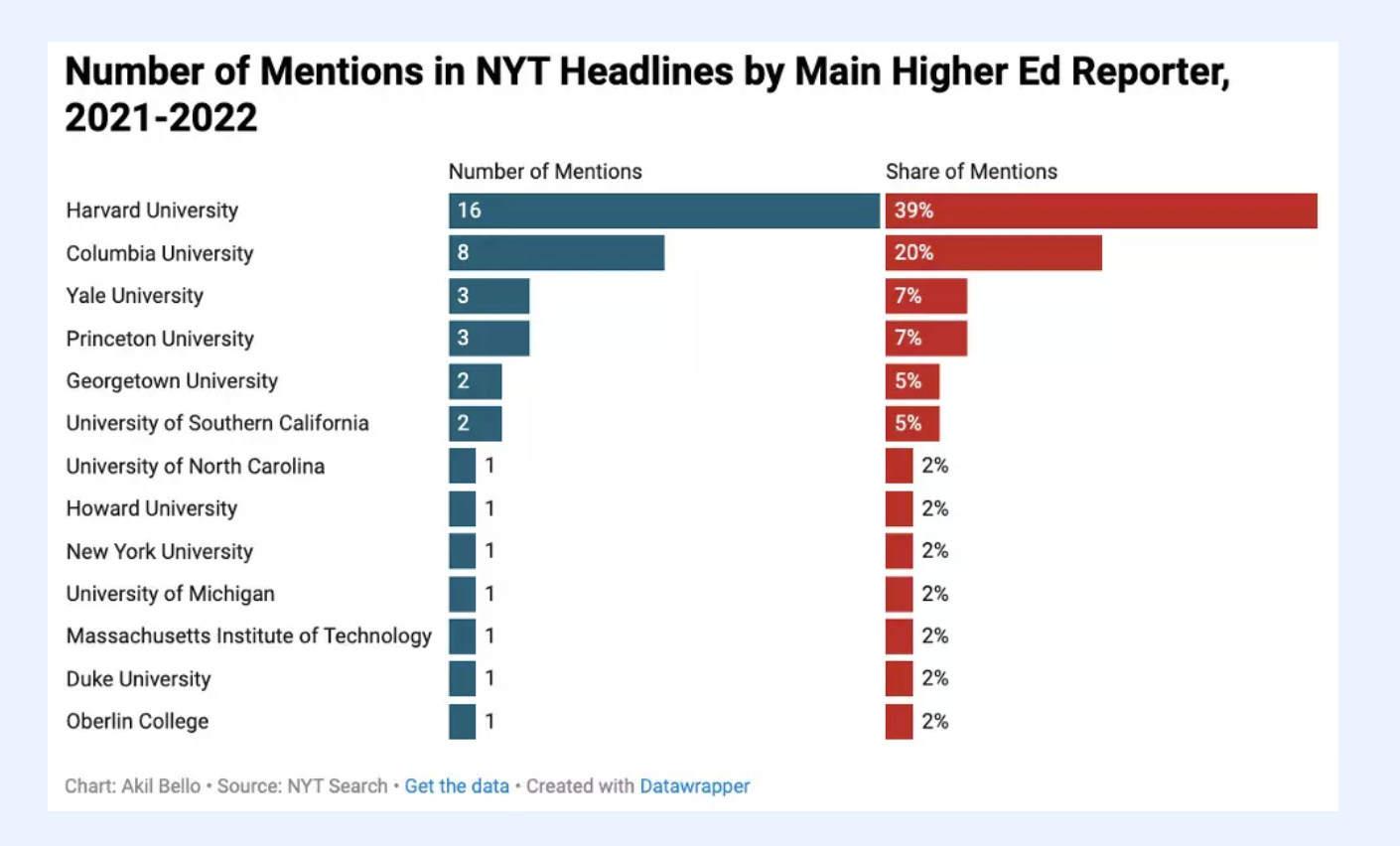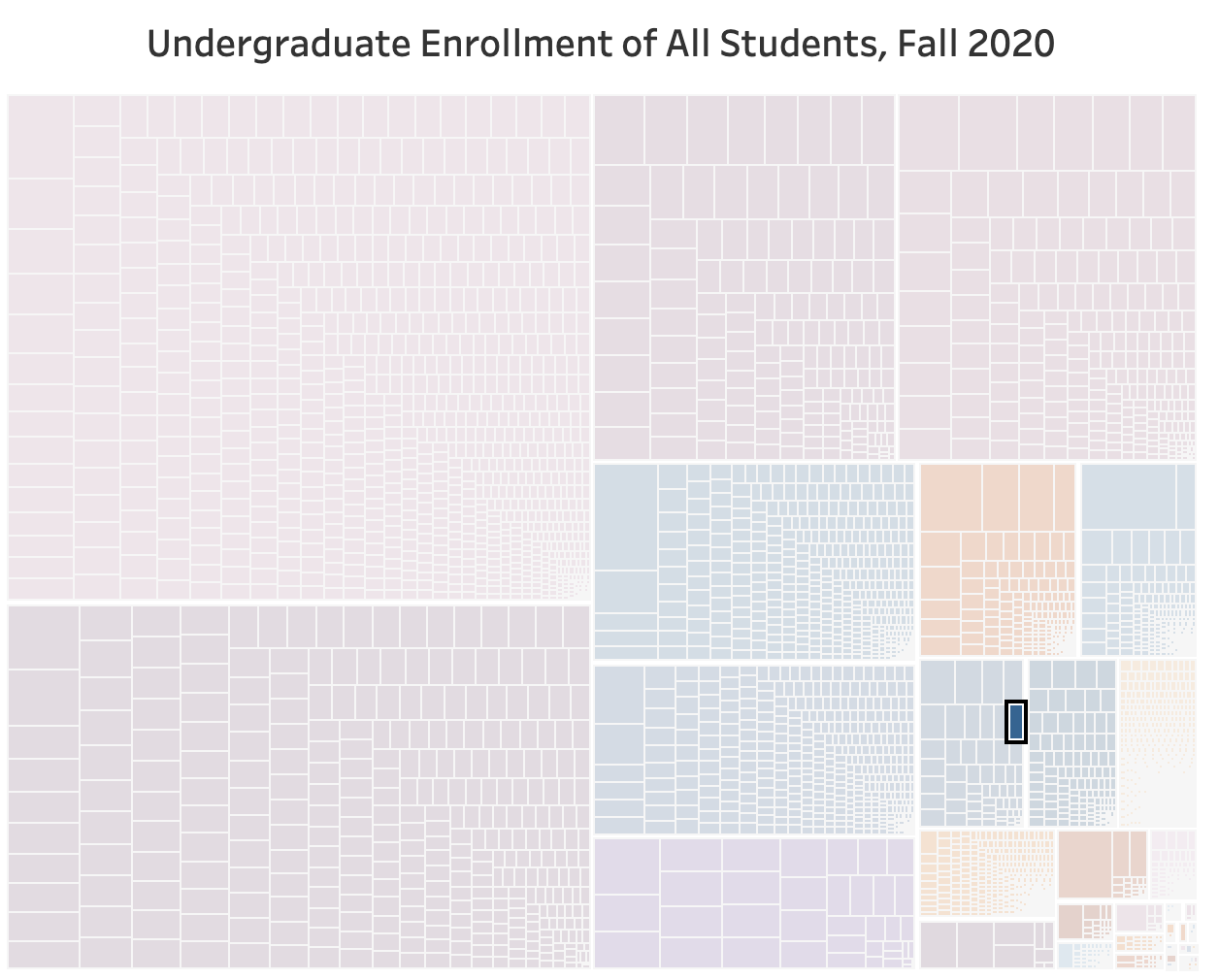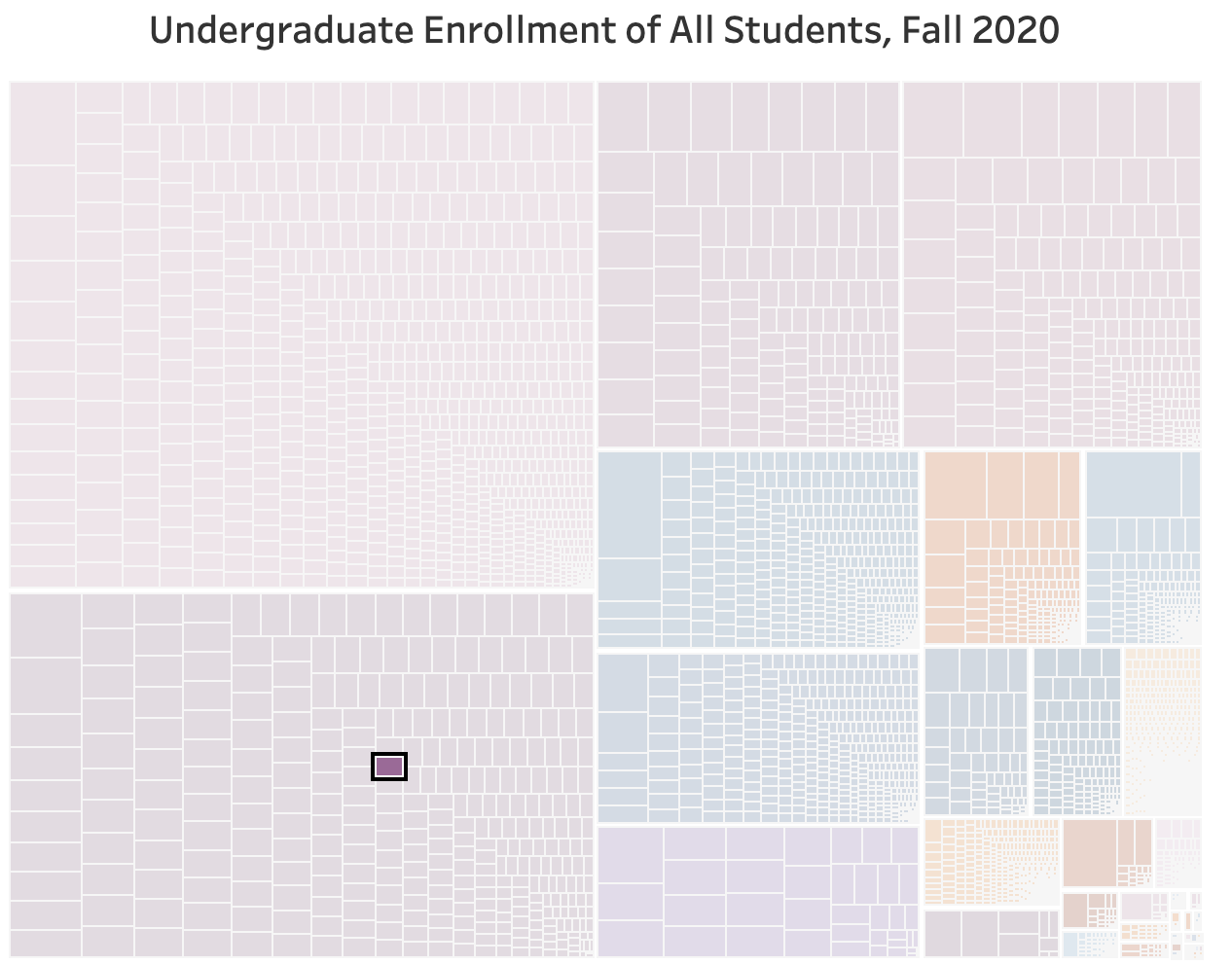There will hopefully be a good amount of attention on education policy in this U.S. election season. The question is, which colleges are deemed newsworthy in that coverage?
Last year James S. Murphy ran the data on which colleges are mentioned in national media, relative to where most students actually go to college. Readers of this site will not be surprised to learn that media disproportionately covers a small number of elite colleges attended by a fraction of students while most campuses get very little media attention.
For example, here are headline mentions of colleges by the main education reporter at the New York Times.

Those top four Ivy League colleges that get most of the mentions in the New York Times enrolled just 0.16% of all undergraduates in 2020.
So where are all the other students? Murphy created this data visualization to show us. Each cell is an Institution of Higher Ed, and the size of the cell reflects the number of students enrolled.

On his website, he offers interactive versions of this data. For example, here is where Pell Grant eligible students enrolled in 2020 (and please click through of this isn't showing in the email).
And here is the small cell that is Harvard, though Harvard gets disproportional attention in the press.

And here, you can click through the tabs to see data sorted by race and ethnicity and selectivity. You can search campuses by name to understand where they fit within the bigger context.
Why does this matter? Because journalists from Ivy League colleges landing plum jobs at prestigious newspapers too easily report on what they know. Because the thousands of students at those two year open-enrollment colleges too rarely complete four year degrees and we have a lot to learn about what gets in their way. Because funding for all of those public colleges is perpetually under scrutiny in state legislatures and the political stories of public higher ed funding deserve much more press attention. Because the story of where low-income Pell Grant students land is a critical story about opportunity and equity.
And most of all, it matters because those students taking a run at college anywhere across these sectors have equal value and worth and the public has an interest in ensuring that each of them gets exactly the support that they need to succeed. The students getting late starts in college, who attended under-resourced high schools, who need to attend college close to home, or who are saving money before transferring to a different school all merit the attention of an informed public if they are to get the support that they need and deserve.
And just FYI, below is where I went to college (ahem ... long before 2020) with a lot of other first-gen students and as far as I know, my campus never ever made national news except for that one good year for the men's basketball team. I had absolutely no idea how selective it was when I applied; I just knew that I was supposed to feel nervous when I opened the envelope with their decision because I'd seen that in books and movies. It turns out that I needn't have been that nervous. And that, too, is a story of the media to which I had access.

You can see Murphy's full analysis at Ed Reform Now. And we should expect more from our media than the coverage that we now have.




